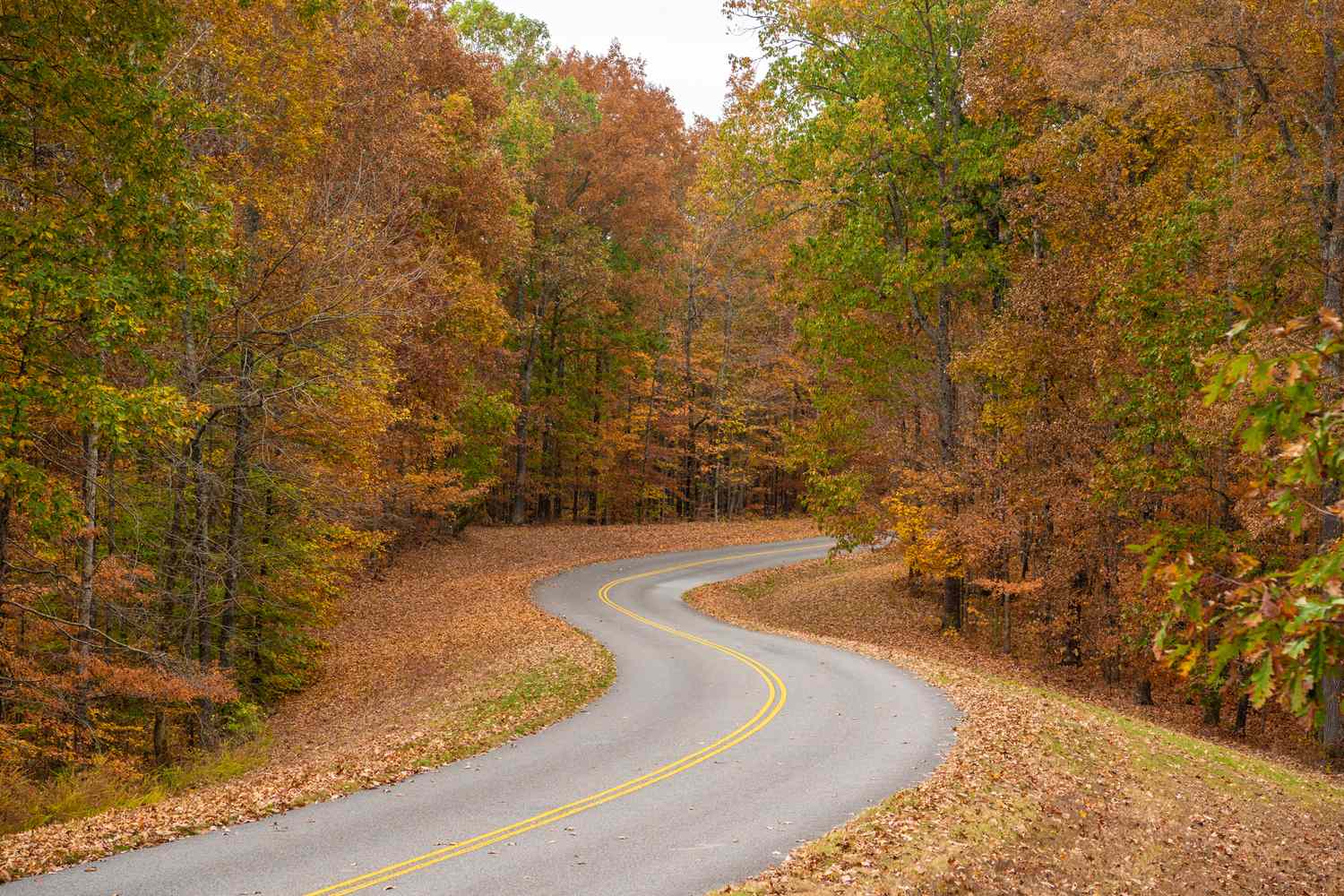:max_bytes(150000):strip_icc():format(jpeg)/TAL-lead-image-NATCHEZTRACEPKW0925-76179b3460c44458ad9857c44754ac2a.jpg)
- Natchez Trace Parkway offers a quiet 444-mile drive through Mississippi, Alabama, and Tennessee.
- Fall is the best time to visit for vibrant foliage, with peak colors usually hitting in October.
- Travelers can explore scenic overlooks, hikes, waterfalls, and historic landmarks along the route.
There are no billboards, stoplights, or gas stations along the Natchez Trace Parkwaya National Scenic Byway and an All-American Road. The historic drive stretches from Natchez, Mississippi, to Nashville, Tennessee, offering a quiet, peaceful journey with deep roots in American history.
“Natchez Trace Parkway commemorates one of the oldest transportation routes in North America. The original footpath or trace was used by Native Americans, boatmen known as ‘Kaintucks,’ European settlers, slave traders, soldiers, and future presidents,” explains Mandi Toy, the interpretation and education program manager for the parkway. “Today’s travelers can enjoy a scenic drive through history spanning 444 miles and three states: Mississippi, Alabama, and Tennessee.”
If you’re hoping to drive the entire route, you’ll want to plan accordingly; there’s quite a lot of ground to cover. Toy recommends “breaking up the trip over three to five days,” and timing the trip for either spring or fall, which she notes are the best times to drive the Trace. “The fall foliage is beautiful along the parkway. The park rangers publish a fall color report from early October through mid-November,” she says.
Historically, the leaves begin to change in September, but because the parkway runs north-south, the exact timing of peak foliage differs depending on where you are; travelers will typically see more colors earlier in the season in the North District. However, your best bet for seeing the glorious reds, oranges, or yellows of the oak, hickory, and maple trees along the route will be mid to late October.
According to the National Park Servicethere are a handful of key fall foliage-heavy overlooks and hikes to check out—and we’re highlighting a few, as well as other can’t-miss things to see and do on and near the Natchez Trace Parkway.
Best Places to See Fall Foliage
David Radza/Getty Images
The Trace isn’t a mountain drive, but it does meander through some of the region’s hardwood forests. As you’re driving the Tennessee portion of the Trace, prepare for spectacular views of autumnal colors; Old Trace Drive (milepost 375.8), Metal Ford (milepost 382.8), and Baker Bluff Overlook (milepost 405.1) will likely provide the picture-perfect photo op you had in mind. There’s also the option to stretch your legs among the trees; hike along the Natchez Trace National Scenic Trail from the Old Trace Trailhead (milepost 426.3) or the Garrison Creek Trailhead (milepost 427.6). Visiting the Meriwether Lewis Campground (milepost 385.9) is a more leisurely excursion.
As the Trace snakes through Alabama and Mississippi, you’ll come to the Rock Spring Nature Trail (milepost 330.2) and the Freedom Hills Overlook (milepost 317.0)—both of which will lead you to a palette of bright, photogenic fall colors. Because the Natchez Trace National Scenic Trail runs almost parallel to the parkway, you’ll also find a number of hiking opportunities in the two southernmost states of the trek. For fall hikes, the NPS suggests the trail section from the Old Town Overlook Trailhead (milepost 263.9) or the Beech Springs Trailhead (milepost 266.0).
Hikes, Overlooks, and Waterfalls
AlizadaStudios/Getty Images
Even if you’re not driving the Trace in October or early November, there are still plenty of amazing sights to be found. “I recommend picking up the Blackland Prairie Section of the trail, located across from the Parkway Visitor Center in Tupelo,” Toy says, referencing the Natchez Trace National Scenic Trail. This particular six-mile section (12 miles round-trip) is open to both hikers and those on horseback and will bring you past the aforementioned Old Town Overlook as well as Chickasaw Village Sitewhere a half-mile interpretive trail provides additional information about the Native Americans who resided in the area.
Another one of Toy’s favorite things to do is “take a stroll at one of the many pullouts,” and she specifically calls out Sunken Trace (milepost 41.5), Cypress Swamp (milepost 122), and Jackson Falls (milepost 405). The latter features a 900-foot-long steep trail that brings visitors down to one of the two waterfalls located along the Trace; the other, Fall Hollowis at milepost 391.9 near Hohenwald, Tennessee.
Cultural and Historic Sites
Ewa Media/Adobe Stock
Because history is so deeply woven into the Trace’s narrative, there’s evidence of the past all along the route. “Emerald Mound (milepost 10) is the second-largest Native American mound in the United States,” says Toy. It’s estimated to have been built between 1200 and 1730 and spans eight acres. At its tallest points, it’s about 60 feet high. At the Natchez Trace Parkway Visitor Center (milepost 266), north of Tupelo, Mississippi, Toy suggests checking out the various exhibits, the park film, and the gift shop. The Meriwether Lewis Site (milepost 385) in Hohenwald is another one of her recommended stops; it’s the death and burial site of Meriwether Lewis, the Virginia-born explorer best known for leading the Lewis and Clark Expedition.





